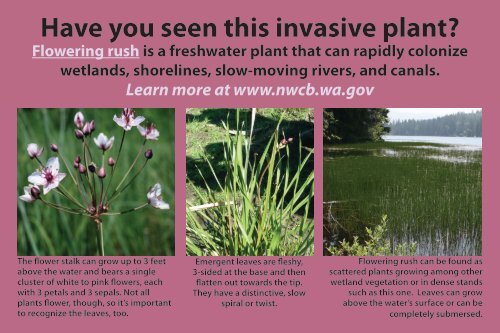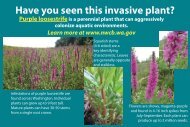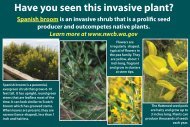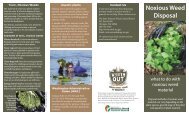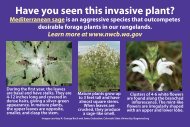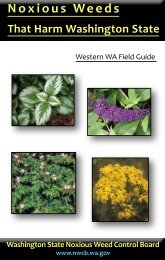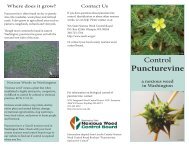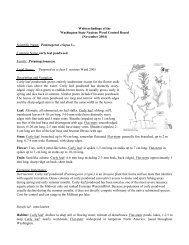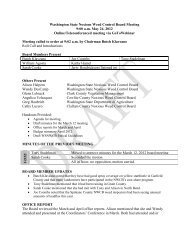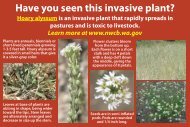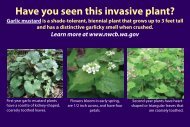Flowering rush - Washington State Noxious Weed Control Board
Flowering rush - Washington State Noxious Weed Control Board
Flowering rush - Washington State Noxious Weed Control Board
You also want an ePaper? Increase the reach of your titles
YUMPU automatically turns print PDFs into web optimized ePapers that Google loves.
,<br />
Have you seen this invasive plant?<br />
<strong>Flowering</strong> <strong>rush</strong> is a freshwater plant that can rapidly colonize<br />
wetlands, shorelines, slow-moving rivers, and canals.<br />
Learn more at www.nwcb.wa.gov<br />
The flower stalk can grow up to 3 feet<br />
above the water and bears a single<br />
cluster of white to pink flowers, each<br />
with 3 petals and 3 sepals. Not all<br />
plants flower, though, so it’s important<br />
to recognize the leaves, too.<br />
Emergent leaves are fleshy,<br />
3-sided at the base and then<br />
flatten out towards the tip.<br />
They have a distinctive, slow<br />
spiral or twist.<br />
<strong>Flowering</strong> <strong>rush</strong> can be found as<br />
scattered plants growing among other<br />
wetland vegetation or in dense stands<br />
such as this one. Leaves can grow<br />
above the water’s surface or can be<br />
completely submersed.
Why is flowering <strong>rush</strong> (Butomus umbellatus) a noxious weed?<br />
• <strong>Flowering</strong> <strong>rush</strong> forms dense stands in previously<br />
unvegetated areas, which can reduce swimming,<br />
fishing, and boating. It can rapidly disperse and<br />
colonize new areas through rhizome fragments and<br />
rhizome buds.<br />
Where do you find flowering <strong>rush</strong>?<br />
• <strong>Flowering</strong> <strong>rush</strong> grows along freshwater shorelines<br />
and riverbanks, and in standing water. It can also be<br />
found in irrigation canals and ditches.<br />
• Its distribution in <strong>Washington</strong> is still limited, though it<br />
is already a serious problem in parts of Montana.<br />
What can you do?<br />
• Learn to correctly identify this invasive plant.<br />
• Please note that it is a Class A noxious weed and a<br />
prohibited plant that cannot be bought or sold in WA.<br />
• Our goal is to treat current populations and prevent<br />
new ones. Please help us by reporting any sightings<br />
to your county noxious weed control board or to<br />
noxiousweeds@agr.wa.gov.<br />
Printed 6/2010


